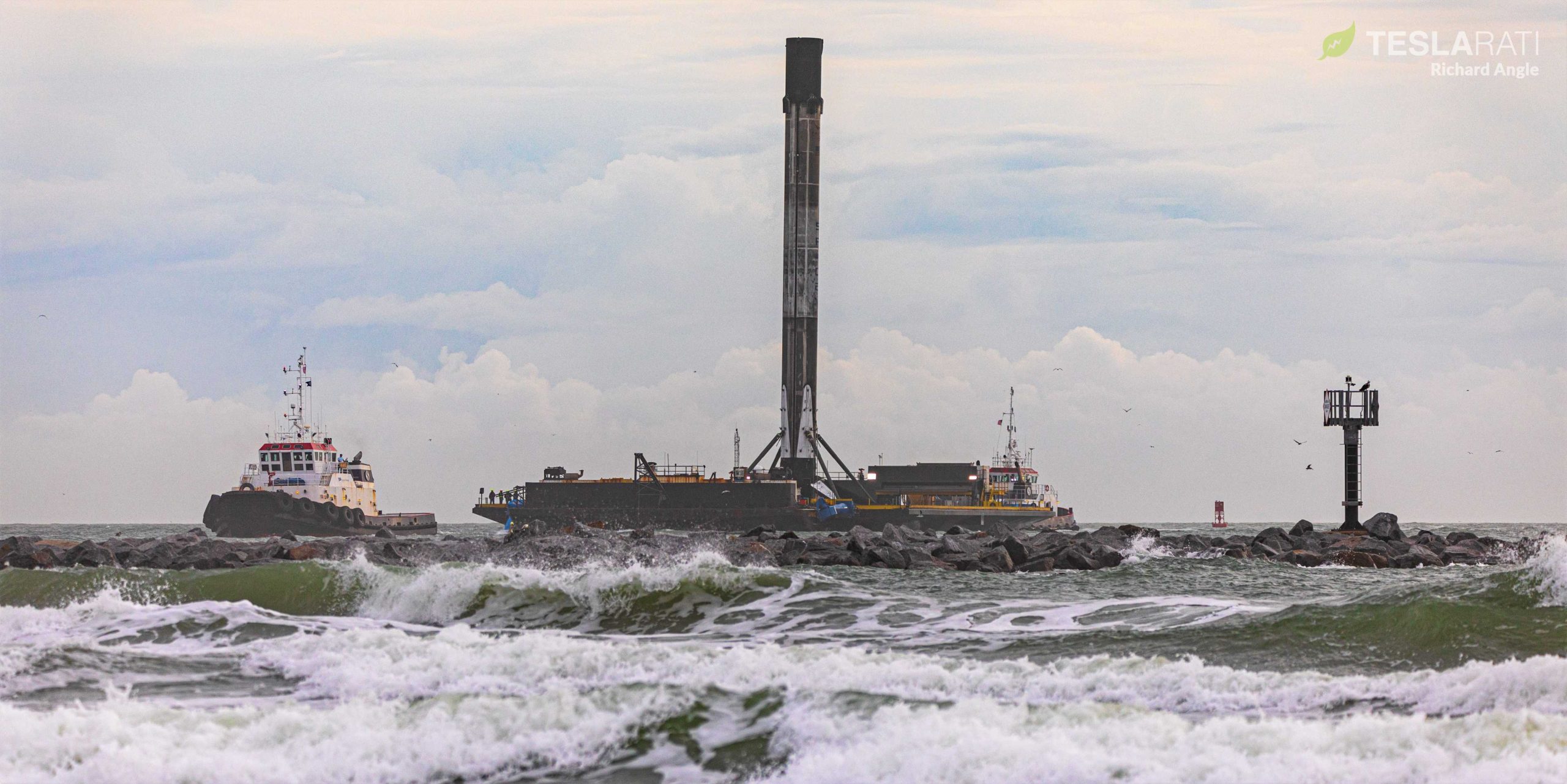
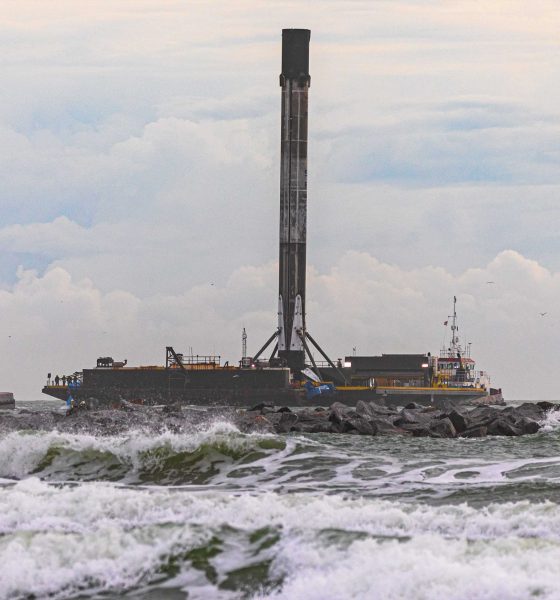
News
SpaceX Falcon 9 booster returns to port on a drone ship for the first time in six months
On November 15th, Falcon 9 booster B1048 returned to port aboard a SpaceX drone ship, the first such return in almost half a year. With that arrival, SpaceX also completed a critical Falcon 9 Block 5 reusability milestone, paving the way for B1048 to continue setting records.
On November 11th, Falcon 9 B1048 made history when it lifted off with 60 Starlink v1.0 satellites, becoming the first rocket booster to launch four separate orbital-class missions. Approximately eight and a half minutes later, B1048 also become the first orbital-class rocket booster to land after its fourth successful launch, setting the vehicle up to be SpaceX’s path leader for future nth-reuse milestones, starting with the first 5th flight in the near future.
Starlink v1.0’s November 11th launch effectively marked the start of SpaceX’s operational satellite constellation deployment, every mission of which will be an opportunity for the company to test new reusability firsts and reduce the risk before certain flight-proven hardware is offered to commercial customers. Company executives have recently indicated that SpaceX hopes to launch as many as 24 Starlink missions – each carrying ~60 satellites – in 2020, giving SpaceX a huge number of opportunities to push the envelope of booster and fairing reusability.
On the ~650 km (340 mi) trip back to Port Canaveral from drone ship Of Course I Still Love You’s (OCISLY) Atlantic Ocean recovery position, the ship – towed by tug Hawk – was forced to briefly divert northwest to escape high seas, but Falcon 9 B1048 was secured by the drone ship’s Octagrabber robot, preventing it from suffering a fate similar to Falcon Heavy booster B1055. By all appearances, the thrice-reused Falcon 9 booster survived the weather and swells unscathed, even as OCISLY itself was visibly banged around, damaging a generator and antenna.
After OCISLY and B1048 arrived in Port Canaveral on the 15th, SpaceX recovery technicians quickly craned the booster off of the drone ship, placing it on the company’s dockside rocket-processing stand. It appears that SpaceX intends to retract B1048’s four carbon fiber landing legs, potentially in a bid to rapidly turn the booster around for a second Starlink v1.0 mission before the end of 2019.
B1048.4’s in-port recovery operations also marked the first time SpaceX has used Port Canaveral’s brand new mobile crane, delivered to the port in January 2019.
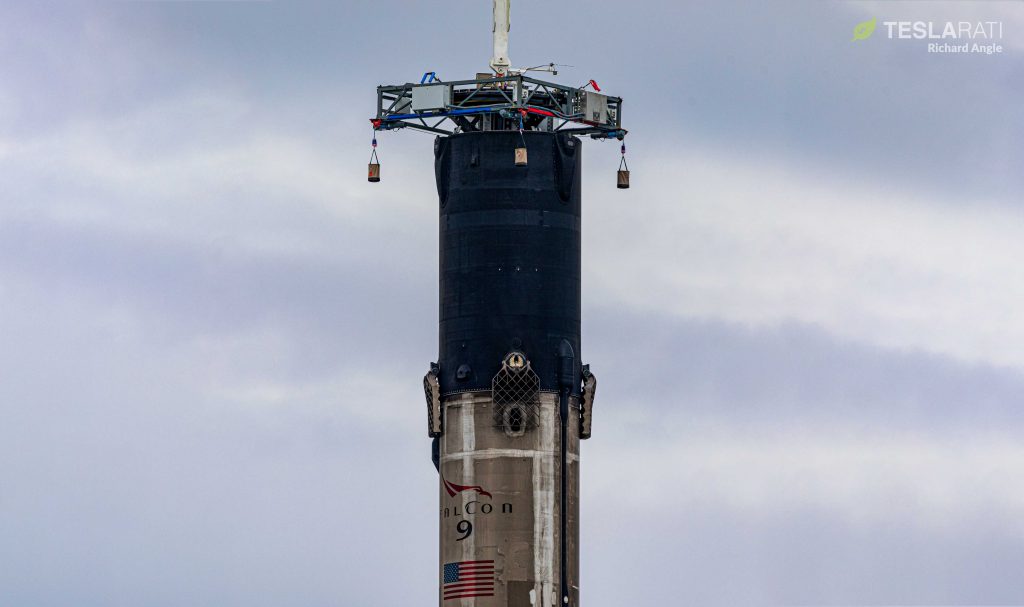
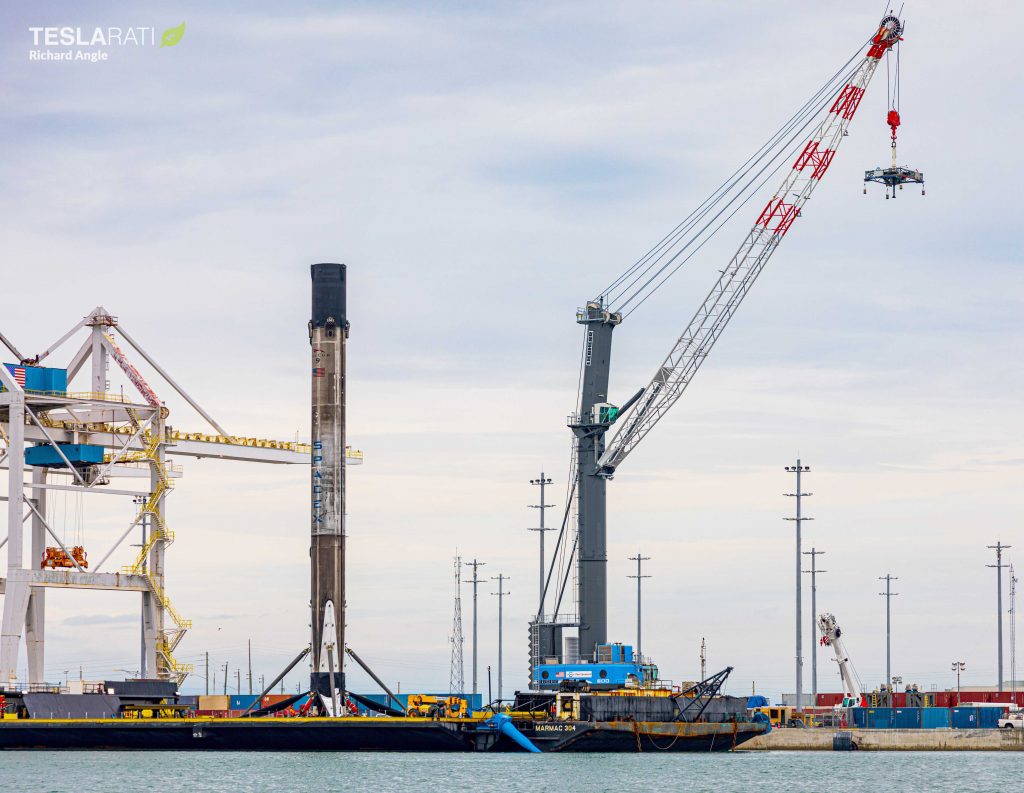
While B1048 has become the first Falcon 9 booster to launch four orbital-class missions, SpaceX has another two thrice-flown flightworthy boosters (B1046 and B1049), the former of which is preparing for its own fourth launch as early as December 2019. B1046 is assigned to Crew Dragon’s In-Flight Abort test, a mission that will almost certainly destroy the booster and its inert upper stage when Crew Dragon attempts to escape the rocket while traveling at supersonic speeds. B1049 could support another Starlink mission or the commercial debut of a thrice-flown SpaceX booster and is likely already set for flight after it completed its third launch nearly six months ago.
Coincidentally, B1048’s Nov. 15 port return was SpaceX’s first drone ship recovery since B1049’s third launch and landing, which saw that booster arrive in port in late May 2019. That nearly six-month gap is one of the longest SpaceX has gone without an ocean recovery since Falcon 9’s first successful drone ship landing in April 2016. With any luck, Starlink will ensure that a similar lull is just shy of impossible until Starship takes over and Falcon 9/Heavy is fully retired, likely a solid half a decade away.
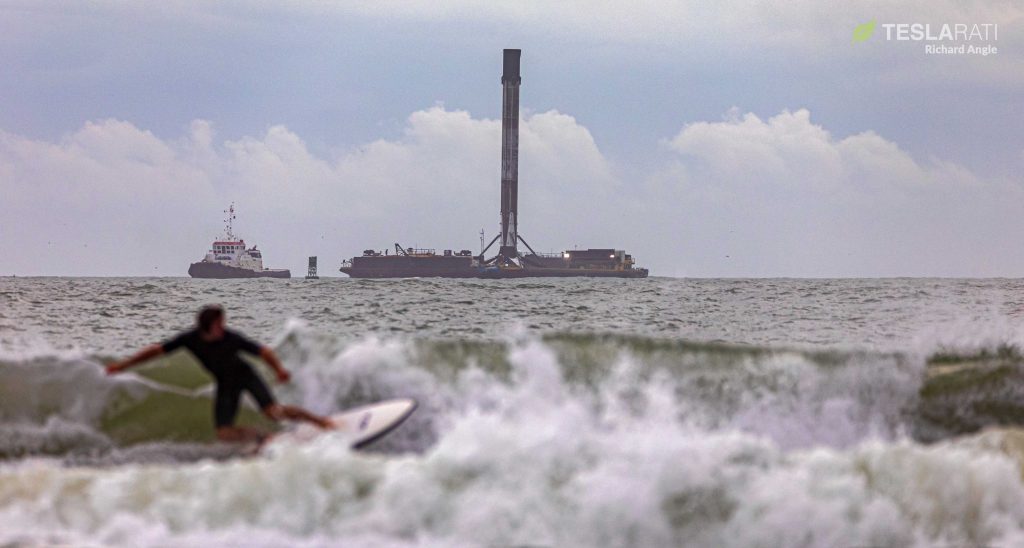
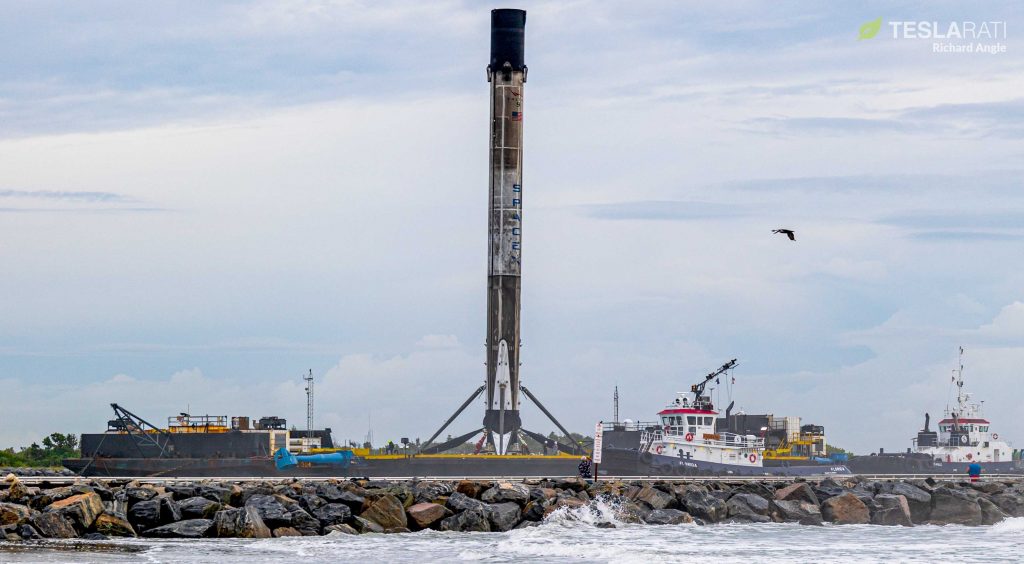
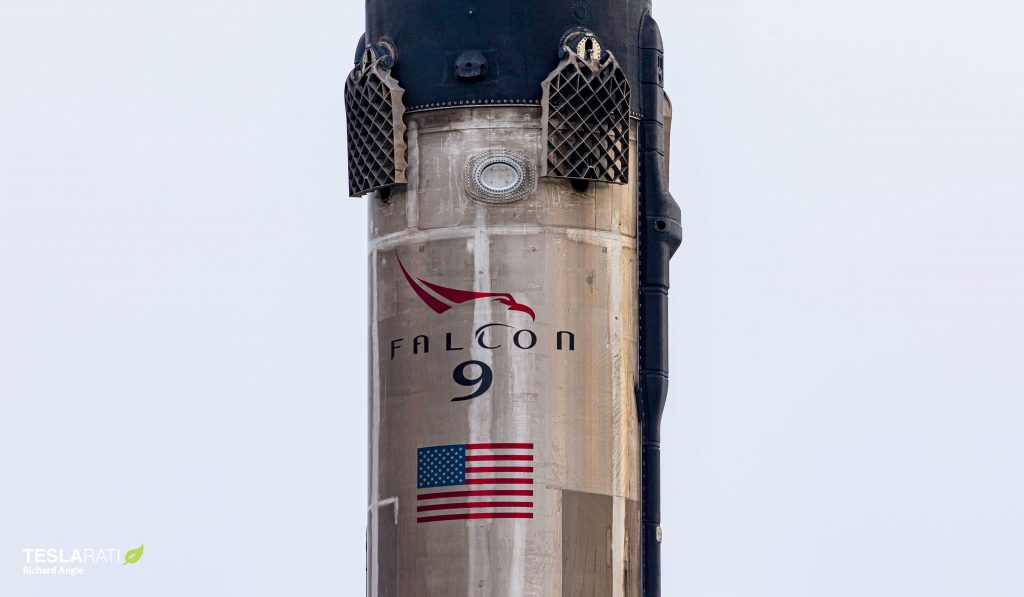
Check out Teslarati’s Marketplace! We offer Tesla accessories, including for the Tesla Cybertruck and Tesla Model 3.

Elon Musk
Elon Musk’s Biggest Revelations on AI, Robots, and the Future of Work from the Moonshots Podcast

Elon Musk’s appearance on the Moonshots with Peter Diamandis podcast was packed with bold predictions, candid admissions, and surprising tech insights. The nearly three-hour conversation covered everything from artificial intelligence to humanoid robots, geopolitics, and the future of work. Here are the top 10 most intriguing takeaways:
-
Aggressive AGI Timeline Predictions
Musk offered a detailed view on when artificial general intelligence (AGI) could emerge, suggesting it may arrive sooner than many expect, emphasizing both transformative potential and risks.
-
U.S. vs. China in the AI Race
He discussed the strategic competition between the United States and China over AI development, noting that geopolitical dynamics will shape how and who leads in the next decades.
-
Future of Job Markets
Musk touched on how AI and automation could reshape employment, predicting massive boosts in productivity alongside potential disruptions in traditional work structures.
-
Clean Energy Transition
A recurring theme was the role of clean energy in future economies, with Musk reiterating the importance of scaling sustainable power generation and storage.
-
Humanoid Robots Are Coming
On the podcast, Musk elaborated on Tesla’s work on humanoid robots, hinting at timelines and applications that go beyond factories to general-purpose assistance.
-
Tesla Roadster “Last Human-Driven Car”
Outside the core discussion topics, Musk teased features of the upcoming Tesla Roadster — calling it “the best of the last of the human-driven cars” and suggesting safety won’t be its main selling point.
-
The Role of AI in Clean Energy and Robotics
Linking AI to both energy optimization and robotics, Musk explained how smarter systems could accelerate decarbonization and task automation across industries.
-
U.S. Innovation Leadership
Musk argued that maintaining American leadership in key tech sectors like AI, space, and robotics should be a national priority, with thoughtful policy and investment.
-
Job Creation vs. Job Elimination
While acknowledging automation’s disruptive effects, he also outlined scenarios where new industries and opportunities could emerge, particularly in AI, space, and advanced manufacturing.
-
Long-Term Vision for Humanity
Throughout the conversation, Musk revisited his long-term philosophical views — including a belief in humanity’s responsibility to become a multi-planetary and technologically empowered species.
Whether you agree with Musk’s optimism or not, the podcast offers a window into the thinking of one of the most influential figures in tech today, in and why his visions continue to spark debate and inspiration.
Elon Musk
Elon Musk just said some crazy stuff about the Tesla Roadster

Elon Musk appeared on the Moonshots podcast with Peter Diamandis today to discuss AGI, U.S. vs. China, Tesla, and some other interesting topics, but there was some discussion about the upcoming unveiling of the Roadster, the company’s electric supercar that will arrive several years after it was initially slated for release.
Musk made some pretty amazing claims about the Roadster; we already know it is supposed to be lightning-fast and could even hover, if Tesla gets everything to happen the way it wants to. However, the car has some pretty crazy capabilities, some of which have not even been revealed.
On the podcast, Musk said:
“This is not a…safety is not the main goal. If you buy a Ferrari, safety is not the number one goal. I say, if safety is your number one goal, do not buy the Roadster…We’ll aspire not to kill anyone in this car. It’ll be the best of the last of the human-driven cars. The best of the last.”
🚨 Elon on the Roadster unveiling, scheduled for April 1:
— TESLARATI (@Teslarati) January 6, 2026
Musk makes a good point: people who buy expensive sports cars with ridiculous top speeds and acceleration rates do not buy them to be safe. They hope they are safe in case of an emergency or crash, but safety is not at the forefront of their thoughts, because nobody buys a car thinking they’ll crash it.
The Roadster is truly going to push the limits and capabilities of passenger vehicles; there’s no doubt about that. Tesla plans to show off the new version car for the first time on April 1, and Musk has only hinted at what is possible with it.
Musk said back in November:
“Whether it’s good or bad, it will be unforgettable. My friend Peter Thiel once reflected that the future was supposed to have flying cars, but we don’t have flying cars. I think if Peter wants a flying car, he should be able to buy one…I think it has a shot at being the most memorable product unveiling ever. [It will be unveiled] hopefully before the end of the year. You know, we need to make sure that it works. This is some crazy technology in this car. Let’s just put it this way: if you took all the James Bond cars and combined them, it’s crazier than that.”
Production is set to begin between 12 and 18 months after the unveiling, which would put the car out sometime in 2027. Hopefully, Tesla is able to stay on track with the scheduling of the Roadster; many people have been waiting a long time for it.
News
Tesla launches hiring for Robotaxi program in its twentieth country
Overall, the hiring signals Tesla’s aggressive timeline for global dominance in autonomous mobility.

Tesla has launched a hiring initiative for its Robotaxi program in its twentieth country, as the company posted two new jobs in Thailand this week.
Tesla is hiring in Bangkok and Kowloon for the Vehicle Operator position, which is related to data collection, and is the first in Thailand, but the twentieth country overall, as the company tries to expand into other markets.
🚨 BREAKING: Tesla is hiring additional full-time Vehicle Operators in Bangkok, Thailand.
Previous openings were 6-month, part-time roles. These are equivalent to AI Safety Operator roles in the U.S. pic.twitter.com/R6LzoU1bos— Tesla Yoda (@teslayoda) January 5, 2026
Tesla has had active job postings for Vehicle Operator positions in the United States, India, Israel, Taiwan, Germany, the Czech Republic, Hungary, the UK, Finland, Switzerland, Sweden, the Netherlands, Austria, Spain, Norway, Italy, and Turkey in past listings.
These postings are not all currently available, likely because the roles have been filled.
Thailand is the most recent, and broadens the company’s potential path to expanding its ride-hailing program, which is only active in the United States in Austin, Texas, and the California Bay Area, so far.
These roles typically involve data collection, which assists in improving Autopilot and Full Self-Driving operation. Tesla’s self-driving programs utilize real-world data that is accumulated and stored, observing vehicle and traffic behavior, as well as tendencies that are performed by human drivers to help increase safety and overall performance.
Overall, the hiring signals Tesla’s aggressive timeline for global dominance in autonomous mobility. Although the company has several high-profile rivals and competitors in the field, it has established itself as a main player and a leader in the development of autonomous technology, especially in the U.S., as its FSD suite is refined on almost a weekly basis.
The Full Self-Driving suite is available in seven countries and territories currently, including the U.S., Canada, China, Mexico, Puerto Rico, Australia, and New Zealand. Its biggest goal for expansion is currently the European market, where regulatory hurdles have been the main bottleneck prolonging its launch on the continent.
Tesla has performed months of testing in various European countries, including France and Spain, and does have support in some areas from various regulatory agencies. However, the company is hoping to get through this red tape and offer its suite in Europe for the first time, hopefully this year.








